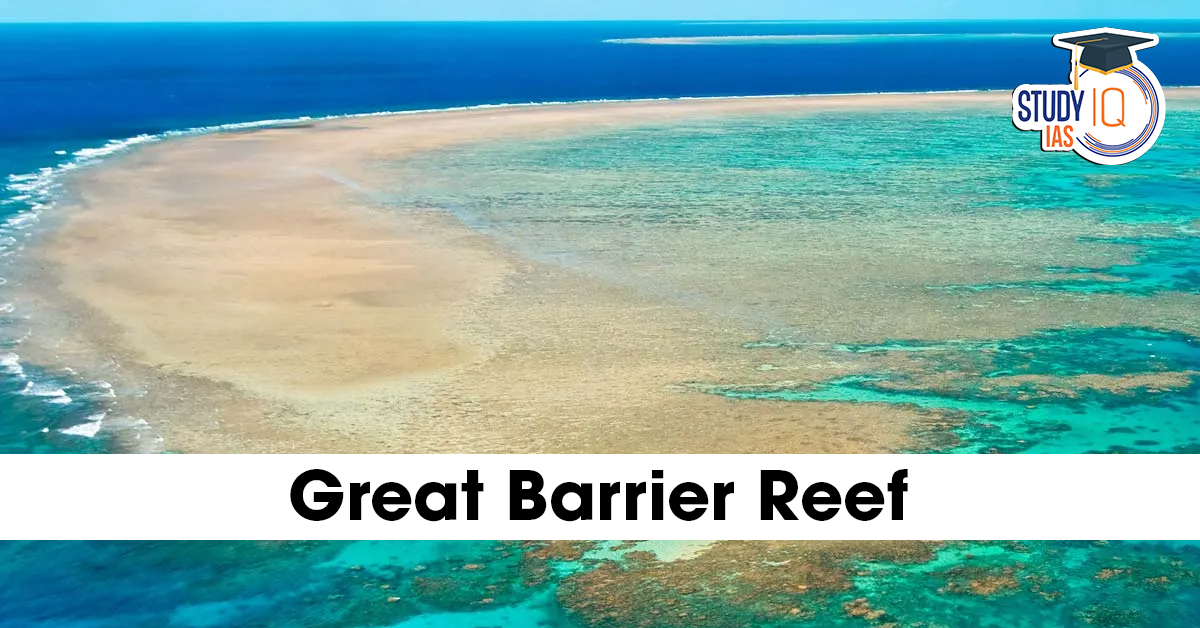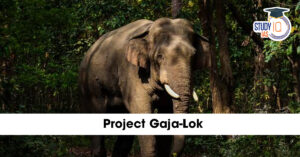Table of Contents
The Great Barrier Reef, the largest living structure on Earth, is experiencing its steepest drop in hard coral cover in nearly four decades. According to recent reports, the decline is primarily driven by climate change-induced heat stress, cyclonic activity, and outbreaks of crown-of-thorns starfish – a coral-eating predator.
This alarming development highlights the vulnerability of marine ecosystems to global warming and underscores the urgent need for stronger conservation measures.
About the Great Barrier Reef
-
Location: Coral Sea, off the northeastern coast of Australia, in the Pacific Ocean.
-
Extent: Stretches for approximately 2,000 km in a northwest–southeast direction.
-
Significance:
-
Longest and largest reef complex in the world.
-
Recognised as the largest living structure on Earth.
-
Home to a vast diversity of marine species.
-
-
UNESCO World Heritage Site: Listed in 1981 for its ecological importance.
-
Management: Overseen by the Great Barrier Reef Marine Park Authority (GBRMPA).
Causes of the Recent Decline in Coral Cover
-
Climate Change-Induced Heat Stress
-
Rising sea surface temperatures have triggered mass coral bleaching events.
-
Coral polyps expel the symbiotic algae (zooxanthellae), leading to whitening and potential death.
-
-
Cyclones
-
Strong tropical cyclones cause physical destruction of coral structures.
-
-
Crown-of-Thorns Starfish (Acanthaster planci) Outbreaks
-
This predator feeds on coral polyps, significantly reducing coral cover when in high numbers.
-
Impact of Coral Decline
-
Loss of Biodiversity: Threatens the survival of fish, molluscs, and other reef-dependent species.
-
Economic Consequences: Affects tourism and fishing industries in Queensland.
-
Coastal Protection Loss: Coral reefs act as natural barriers against wave erosion.
Other Important Geographical Features of Australia
Australia’s diverse geography ranges from tropical reefs to arid deserts and mountainous terrains. Some notable features include:
1. Uluru (Ayers Rock)
-
Location: Northern Territory.
-
A massive sandstone monolith, sacred to the Anangu people.
2. Great Dividing Range
-
The longest mountain range in Australia, running along the east coast.
3. Murray-Darling Basin
-
The largest river system in Australia, vital for agriculture.
4. Simpson Desert
-
Known for its red sand dunes and extreme aridity.
5. Tasman Sea
-
Separates Australia and New Zealand.
6. Coral Sea
-
Location of the Great Barrier Reef.
7. Nullarbor Plain
-
A vast limestone plateau with the world’s longest straight railway track.
8. Kimberley Region
-
Rugged northwestern area famous for gorges and waterfalls.
9. Great Victoria Desert
-
The largest desert in Australia.
10. Cape York Peninsula
-
Tropical wilderness in far north Queensland.
Conclusion
The Great Barrier Reef is not only an Australian treasure but also a global ecological asset. Its sharp decline in coral cover serves as a warning about the impact of climate change on marine ecosystems. Protecting it will require coordinated international climate action, stronger marine conservation policies, and effective management of local threats.


 Miss Universe Winners List From 1952 to ...
Miss Universe Winners List From 1952 to ...
 RUDRA Brigade: The Biggest Transformatio...
RUDRA Brigade: The Biggest Transformatio...
 Project Gaja-Lok: INTACH Launches Landma...
Project Gaja-Lok: INTACH Launches Landma...

























